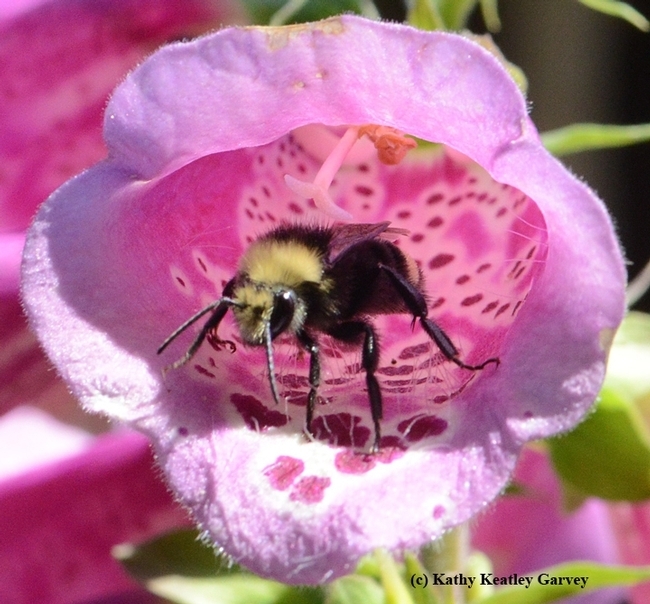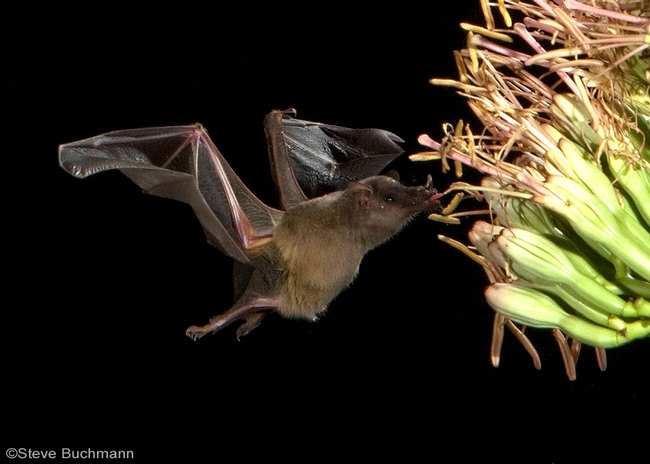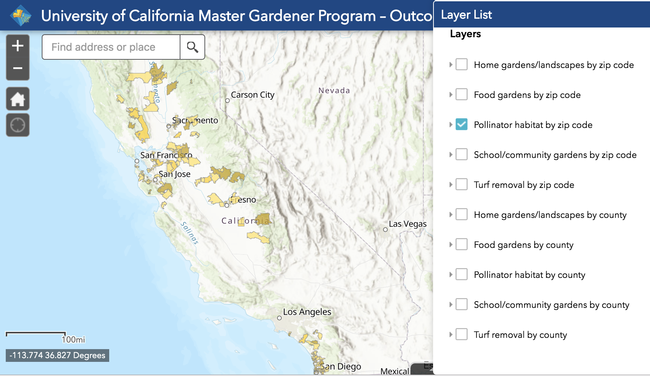We depend on pollinators
Happy Pollinator Week! For 2019, it's June 17-23. Most people think of bees when they think pollination, but don't stop there. “Think the "b" alliteration: bees, birds, butterflies, bats and beetles. But don't forget the flies, ants, mosquitoes and moths!” writes Kathy Keatley Garvey in her Bug Squad blog.
Did you know…
- Three-fourths of the world's flowering plants depend on pollinators
- 35% of the food we eat depends on pollination by animal pollinators
- There are 25,000 different species of bees
- 1.6 million colonies of honey bees are needed to pollinate California's 800,000 acres of almond trees.
- Honey bees will fly up to 4 miles from the hive to collect water, nectar and pollens.
“Loss of a species, especially a pollinator, diminishes our global environment,” said the late bee expert Robbin Thorp, distinguished emeritus professor of entomology at the University of California, Davis, in a 2010 interview. “Bumble bees provide an important ecological service--pollination. This service is critical to reproduction of a huge diversity of plants that in turn provide shelter, food (seeds, fruits) to diverse wildlife. The potential cascade of effects from the removal of even one localized pollinator may affect us directly and indirectly.”
Launched 12 years ago, National Pollinator Week focuses on the valuable ecosystem services provided by bees, birds, butterflies, bats and beetles, according to Pollinator Partnership, which manages the national celebration. Other pollinators include syrphid or hover flies, mosquitoes, moths, pollen wasps and ants. They transfer pollen from the male anther of a flower to the female stigma.
Bats are very important pollinators in tropical and desert climates. More than 300 species of fruit depend on bats for pollination.
UC ANR's California Naturalist Program promotes environmental literacy and stewardship through discovery and action. To become a certified California Naturalist, participants enroll in a course with one of our partner organizations. To receive certification, every UC California Naturalist completes a capstone project that benefits nature. Many California Naturalist projects benefit pollinators. For example, California Naturalist Cynthia from the USC Sea Grant SEA LAB course made houses to support native mason bee population in Palos Verdes. She made the bee houses out of repurposed scrap wood and cardboard, paper coat hanger tubes, used toilet paper and paper towel rolls, and giftwrap rolls.
To create habitat for pollinators in your garden, the UC Master Garden Program recommends planting a variety of plants to provide diverse sources of nectar and pollen. The UC Master Gardener volunteers in San Mateo and San Francisco counties have compiled a list of pollinator-friendly plants.
The UC Master Gardener volunteers also collected data on pollinator habitat in California by zip code and created an interactive map.



